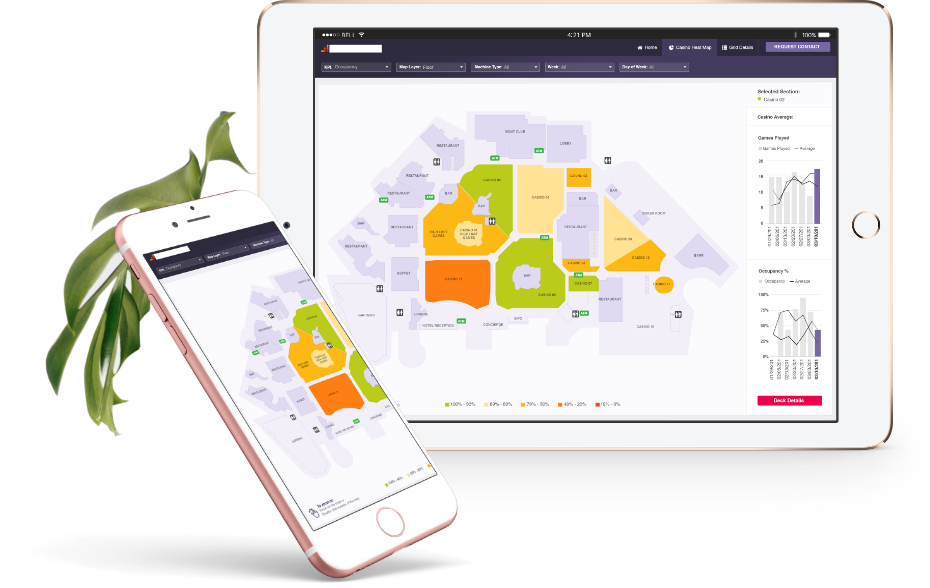Planning your workplace infrastructure and culture for remote working

By Nathalie Marc-Charles, Chief Human Resources Officer, Analytics Intell
The Coronavirus outbreak has prompted companies all over the world to revisit their work from home policies practically overnight. For many, this transition has a tremendous impact on the bottom line and questions such as: how do we manage teams to stay productive, effective, profitable and connected while working remotely? Particularly for highly matrixed organizations that rely on internal teams to provide data and analytics across the enterprise – how can you create a working philosophy that continues collaboration while offsite?
At Analytics Intell, we have had a 100% remote workplace for years and have found tremendous success in this model. It not only allows us to have access to extraordinary talent all over the world, but it allows us to retain team members who desire flexibility and autonomy while helping us grow our company.
Whether your company is looking to create an optional work from home policy or current conditions are propelling you to transition to a fully remote workplace for a time, it all starts with setting up the appropriate structures, solidifying your company culture through virtual measures and getting aligned on sharing information.
Here are a few things to keep in mind when transitioning to a remote workplace:
Define Remote Work Policies
Ensuring that your team understands what is expected of them is key in a successful remote structure. Transparency in your policies will help your team feel empowered and active contributors to your business growth. Generally, remote work policies should include the following:
- Work Hours – Does the team need to be available during certain hours or do they have the flexibility to set their own schedule? If you have team members across multiple time zones, identify required online hours to host team meetings or which regions will tap into customer support at various points throughout the day.
- Productivity – How will your team measure success? How will they keep track of projects and their status? Clearly define production requirements and success and failure markers.
- Communication – How often are teams required to communicate on project deliverables? How often and who is responsible to provide project updates to clients?
- Set healthy boundaries – The thought that employees don’t work as hard as they would work if they were in your physical office is a myth. In fact, studies show that over two-thirds of employers report increased productivity among their telecommuters, considering their office is in their home and vice versa. Your management team must set up, and lead by example, healthy boundaries where employees feel like they can give 100% of themselves to the organization and still allow time to disconnect.
Set up the proper technology tools
In order to improve efficiency and increase productivity while your staff works in multiple locations, it requires the right collaboration tools so teams can stay connected.
- Communication – Beyond email systems, what tools will your team use to maintain constant and clear lines of communication? How will you manage projects and collaborate on creative projects? Check out this list of collaboration tools to see what’s best for your teams.
- Productivity – If you’re concerned about maintaining performance outside of the office, or proving efficiency to stakeholders, you can apply tracking technology or prepare quick performance reports. This way, you can have data points on productivity related to working in home versus individual employee performance.
- Data Management – what tools will your team use for information documenting and sharing, that is both organized and secure? These systems will help your employees stay organized and spend less time on navigating multiple systems or administrative nuances.If you think your company requires more sophisticated technology beyond these standard collaboration tools, our company has successfully developed IT infrastructures for companies across industries to ensure various divisions are able to work seamlessly across the enterprise.
Reinforce your culture through virtual meetings
It can be quite challenging to maintain a company culture when you can no longer rely on the day-to-day interactions, but the way you structure your meetings, especially “all hands” meetings can make the difference. A few rules of thumb to keep your team motivated, engaged and connected to the company through virtual calls:
- Always start your meetings with light conversation that leans on personal touchpoints. You feel connected to people when you know them on a personal level, so make time for chit chat so your team can get to know each other and talk about things that are important to them.
- Ensure that your team is fully engaged in the conversation as it is happening. Utilize virtual conferencing tools such Webex, where you can keep your team collaborating in your conversation. Send an agenda or debrief information in advance to make sure everyone is fully prepared. Use key features such as group messaging, whiteboarding, file and screen sharing. Call on various team members throughout the call so everyone is prepared to be engaged.
Modernize your reporting systems
When you’re working with a team in multiple locations, updates and developments will move quickly. When timing impacts organizing an all hands meeting or sending out detailed emails, your team should have access to the latest data so they can be in sync with all members of the team. This typically includes a central database that connects your financials and other data inputs, providing key metrics that your employees need to maintain progress.
- Key metrics should be relayed quickly and clearly in easy-to-read memos, reports and dashboards so that when your team convenes virtually everyone is clear on the data and how to evaluate next steps.
- Use reporting structures to track division performance difference between time they worked onsite vs remotely. For those getting acclimated to this new work style, this will help make sure the productivity is at the expected level without impact the business later down the road.
If you are curious about a reporting platform that can help with your strategic efforts and operations, our experts can talk through your options or develop customized solutions.
Trust your team
You have hired the best and the brightest, therefore you need to trust that your team will deliver on what is expected, the most effective way to measure productivity is through your team’s output, not their face time. Once you set them up for success, you should feel confident that your team members are satisfied with the increased flexibility, and their output will reflect this.
Access to data systems and information sharing is critical to how your teams will ensure productivity, while working remotely. Analytics Intell is a full-service technology company that helps companies identify areas to optimize data and improve business performance. Not only do we consult businesses on getting systems set up for a dynamic workforce, we also live by example through a fully remote, global team.
If you are looking for additional guidance on your remote work infrastructure or for remote career opportunities in data and analytics, please contact us.
Sign up for additional resources like this
Analytics Intell is a full-service global data technology company that helps businesses of all sizes build intelligent analytics applications, fully integrated within your enterprise, to optimize data assets and drive business performance. We help organizations plan, design, implement and deploy complete analytics solutions to provide deeper insights and better decision making.





